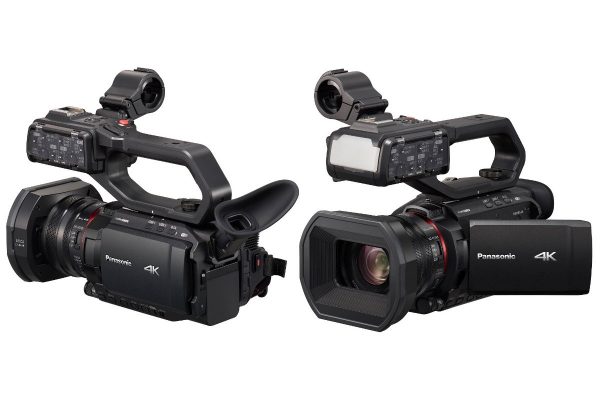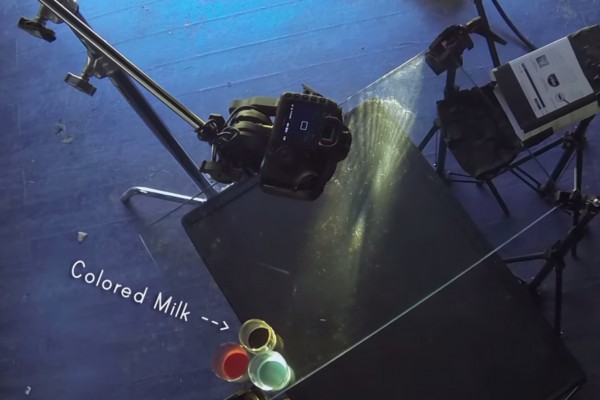Having trouble making focus and framing decisions based on what you see in your DSLR viewfinder or LCD screen? You may need to think about an external version.
By: Luke Stevenson
With more and more digital SLR cameras supporting high-definition video, many prosumers as well as professionals are favouring DSLRs over expensive, bulky, heavy and more limited dedicated video cameras.
But using what was initially designed as a replacement for 35mm film cameras is not without drawbacks. The very nature of SLR cameras with their moving mirrors means that the built-in viewfinder of a DSLR is useless when capturing video – the mirror is flipped aside to allow the sensor to capture the light – so videographers have to use the onboard LCD to monitor exactly what they are recording. These built-in screens drain camera batteries, have relatively low resolutions and are often all but unusable when used in strong ambient light. While they’re fine for a quick check of framing and exposure or to review footage once you can get into the shade, you really have to consider an external monitor or viewfinder to view video clearly and consistently at a resolution and scale where you can be certain what you have captured.
MONITORS
Monitors are LCD screens powered either by a built-in battery or, in some cases, the same batteries you use for your camera via adaptor plates (which means one less thing to pack). They attach to the camera using cables (HDMI, Composite, Component 3G or SDI) and can be mounted either on the camera or wherever is most convenient. The flexibility of mounting is especially important when using stabilisers, jibs, shoulder rigs, or any other arrangement where the camera may be placed at a distance from the operator. These screens, being self-powered, reduce the load on the camera batteries, giving you more shooting time between charges/changes. They can be larger than the built-in screens so you can review footage without straining your eyes, and often also have a higher resolution, allowing for a truer representation of what’s being shot.
Audio Monitoring:
Audio monitoring shows the levels of the sound being recorded, helping you to make sure your shots sound as well as look great. Some monitors also include 3.5mm stereo sockets allowing you to connect headphones to monitor the microphone source.
Focus/Exposure Guides:
There are various focus and exposure guides available on some models. Peaking Filters provide visual feedback on which parts of the frame are in focus. We’re all accustomed to Autofocus guides when shooting stills, but keeping a scene in focus with video is another task altogether. Adding zoom and focus for more dimensions to your shot makes it almost impossible (without a lot of practise) to get the shot you want on your first take. With Peaking Filters, you get instant feedback on where the shot is focused as the monitor identifies any sharp edges within the frame, helping you keep the shot (and the viewer’s attention) on the action.
False Colour:
Provides feedback on the exposure of the shot using exaggerated and bright colour scales. As our eyes can quickly and seamlessly adapt to differences in light and dark, being able to see these coloured scales of exposure ensure you’re not stuck with hours of unusable footage that ‘looked alright when I shot it’. (If you want to feel like The Predator, just leave this mode on all the time.)
Sizes:
Monitors also come in a range of sizes. The smaller units are more tailored to on-camera use and can be mounted on the hot shoe. Primarily designed to replace the built-in screens, they provide additional focus and exposure feedback. The larger units offer more features and are designed for mounting elsewhere. They tend to offer HDMI pass-through, as well as audio monitoring via 3.5mm headphone sockets and waveform monitoring.
There is a huge range of models available in the monitor market but for simplicity’s sake, we’ll focus on those with HDMI input as this is supported by most DSLRs with HD video functionality.
As you can see there is a huge range of prices, resolution and features, and these are just a small sample of the monitors available. From this selection though, if you are looking for a smaller monitor, the ikan VL5 or Marshall Monitors V-LCD51 are your best bets. If you’re looking for something on a jib or in another application where weight and size are not issues, then the ikan VH8 with its larger screen and greater features might be suitable.
VIEWFINDERS
Viewfinders are a hood and eyepiece that can be attached to a monitor, blocking out ambient light. Some models are designed to attach to external monitors, while others connect directly to the LCD screen built into the camera.
Kinotehnik provides a range of viewfinders and appropriate mounting frames for most popular camera makes and models ranging in price from $135 to $165. Zacuto also offers viewfinders for use with or without their monitors. The Z-Finder Jr ($345) and Z-Finder Pro ($515) can be used without a monitor via a baseplate that screws into your DSLR’s tripod mount and uses the built-in screen. They can also be used in conjunction with the EVF Snap (US$641) or EVF Flip (US$736) monitors.
Regardless of whether you choose to use a monitor, a viewfinder, or a combination of the two, anything that helps ensure you’re getting the highest quality video is a worthwhile investment. After a day of shooting, there’s nothing worse than finding talking shadows or a polar bear in a blizzard.







